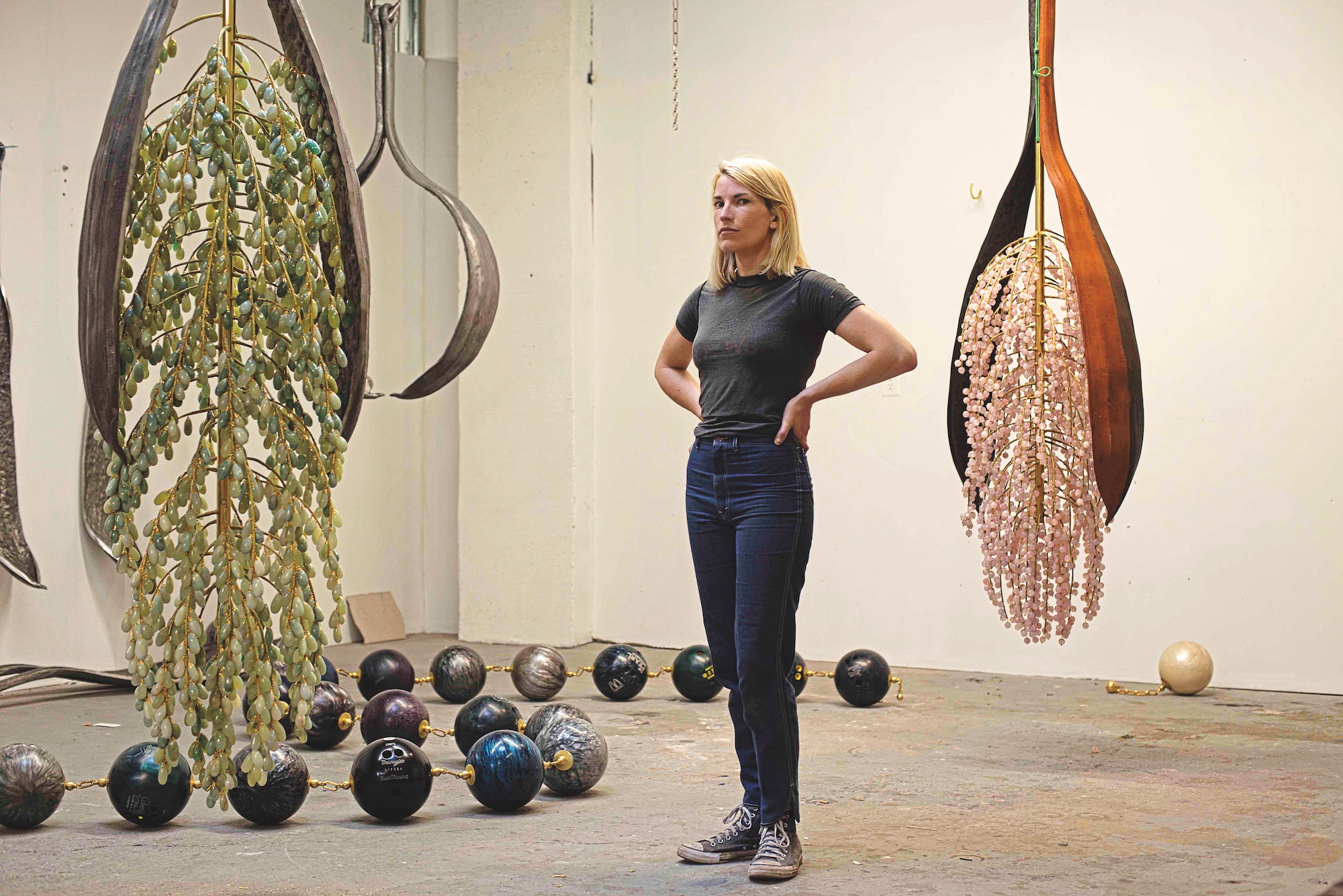
If August tends to be a sleepy time for New York City, the art world in particular can seemingly come to a standstill. But one wouldn’t guess as much visiting Kathleen Ryan: When I caught up with her in her East Williamsburg studio shortly before Labor Day, she had been working seven days per week for 10 to 12 hours daily since the beginning of the month in preparing for her first New York solo show, opening September 13 at Arsenal Contemporary.
“There’s one week before everything is getting picked up,” she says. And I’m trying to finish new sculptures for Frieze London. I’m in deep in task-list making mode.” It’s been a necessary skill as of late; back in February, Ryan saw through a life-altering decision to move to New York and leave her native Los Angeles. Shortly after, dealer Francois Ghebaly of Downtown L.A.’s Ghebaly Gallery displayed a few of her pieces at March’s Independent art fair. Arsenal Contemporary co-director Isabelle Kowal had been interested in her work, and was keen to see it in person. “When I came to Independent, I immediately went to Ghebaly’s booth,” she says. It did not disappoint, and she bought a piece on the spot, and, in practically the same breath, asked if Ryan could have a show at the space.
In her practice, Ryan is influenced by historical styles and motifs in creating the large-scale sculptures—an aesthetic predicated by her antique-dealing mother, as well as majoring in archaeology. Often rendered in heavy, industrial materials, her works are rife with shapes inspired by plants and animals, like a concrete bunch of grapes, as in Bacchante (2015). The aim is for the substance to “weigh down the airiness of a subject,” she explains.
Ryan will present five new sculptures in the Arsenal exhibition, including a pearl necklace assembled using bronze chandelier parts and black bowling balls; as well as a pink granite statue, carved from a manufacturing part called an angle block, which she bought on eBay. Three additional hanging works emulate the seed pods of the queen palm, a common variety in L.A., with iron palm husks encapsulating clusters of jade and rose quartz stones.
The variances between the iron, “the material of the industrial revolution, a tool for creating order and rational systems,” and the rose quartz and jade, “more ethereal, feeling-based,” exemplifies the sort of physical and cultural contrasts that fill out her works’ conceptual dimensions.
The bowling ball piece, for instance, “is a big pearl necklace, but I don’t want to trap it there. I hope it is still open enough to also perhaps be a snake, balls and chains, a sex toy or a formal sculpture and a romantic gift,” says Ryan.
“She takes from nature and transforms it totally,” observes Kowal. Loreta Lamargese, co-director alongside Kowal at Arsenal Contemporary, also finds the mutability of Ryan’s work to be “incredibly compelling.” “Her sculptures all have their stories, their own histories,” says Lamargese. “Then, in the final form, the different narratives kind of melt together into one story.”










 in your life?
in your life?

